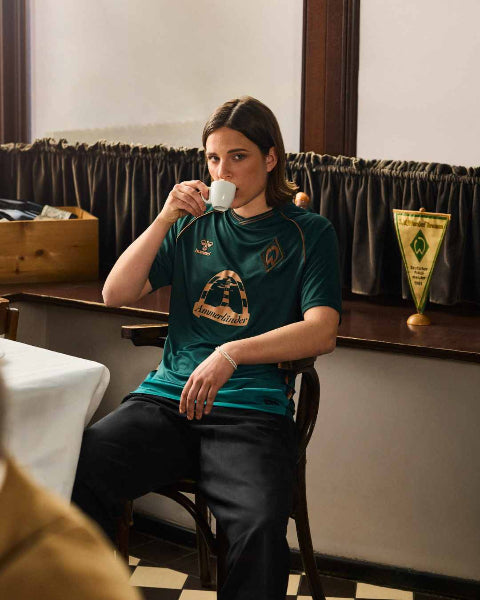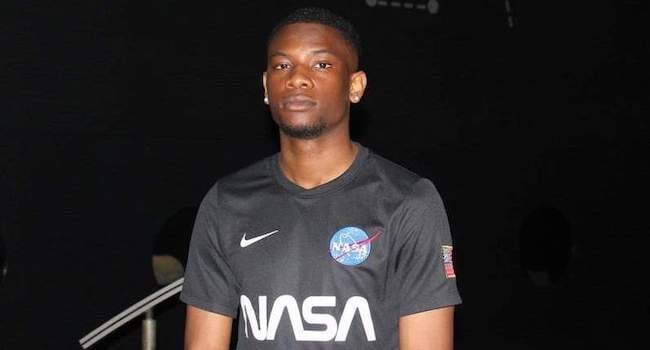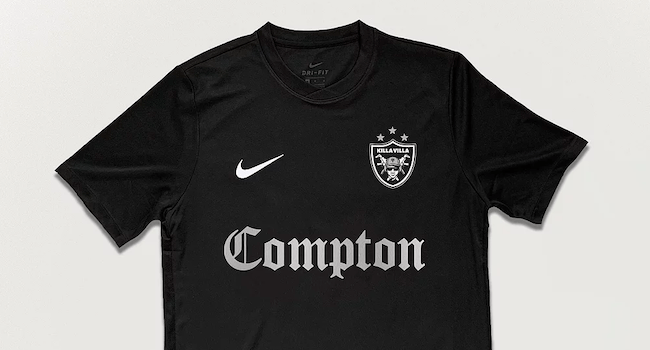Recently added
Vintage shirts
Concept kits
Legends
When is the best time to buy a football shirt?
by Phil Delves February 05, 2022 6 min read

When was the last time you bought a football shirt?
I’d guess that, unless you’ve been dabbling in the stock market, it was quite recently. We all know what it’s like as a collector; every week brings with it the opportunity for fresh deals, opportunities to swoop in at the last second on eBay or put some savings together for that previously elusive holy grail.
For most of us though, there’s a budget to consider. The harsh reality of collecting is that there are simply too many shirts out there to purchase, so whilst there are always chances to add to the haul, you also have to think about the long game.
Many people, especially those who are just starting out collecting shirts, are rightly concerned about not wasting their money on a shirt that they could get later down the line for half the price. Should you simply wait for a sale before buying a shirt, or is there more to it then that? Is it risky to hold out buying a shirt you really like past Christmas, Easter or even the start of the following season?
Here’s a few thoughts on whether there is such a thing as the best time to buy a football shirt.
Browse our collection of all vintage football shirt here.
When is the best time to buy a football shirt?
1. Buy new football shirts, sometimes
For the most part you should actually avoid buying a football shirt on release (we’ll talk about the exceptions later). Shirts for the majority of Premier League clubs will retail around the £70 mark for replicas and over £100 for a player issue shirt, and the story is similar across other leagues.
Of course there are those who want to buy their club’s shirts every season. The price, though still a factor, is not the primary consideration, but even in this example I would counsel patience. It’s highly likely that a shirt will be available for half the price in the not so distant future and, let’s face it, last season’s shirt can probably get you by until then.
As a collector, it makes even less sense to buy a shirt new. Even in today’s often challenging market, £70 can go a long way when it comes to vintage shirts. Collectors are usually better off using that ‘new shirt’ money for something older, be that through sniping a bargain on eBay, or picking up another collector’s unwanted leftovers from the previous season.
As I hinted at before though, there are some exceptions to the ‘don’t buy new’ rule…
2. Limited edition football shirts
There are some situations where buying a shirt new isn’t just recommended; it’s critical. For limited edition releases, or shirts with considerable hype surrounding them, you have to be quick off the mark to purchase or risk missing out entirely.
Unfortunately knowing whether a shirt is going to sell out or not is more art than science, but there are some key points to consider. Firstly, if a club says their shirt is limited edition, dig around to see if that’s actually the case. Does the shirt have a strict limit in terms of availability, or is the phrase “limited edition” being bandied about with nothing to back it up?
Some limited edition shirts include some sort of unique patch signifying what issue number a particular shirt is. This is a big help for verifying that a shirt is part of the limited set, and it’s also a big draw for me when considering whether to fork out for something special.
If a shirt isn’t limited edition though, how do you know if it will be available weeks or even just hours after it hits the ‘shelves’?
Consider the size of the club and/or manufacturer. Most big brands and clubs will restock their releases down the line. There are notable exceptions, like Inter’s 2019 third kit, but even popular releases like Nigeria’s 2018 shirt ended up being available several months later.
For relatively ‘smaller’ clubs, you often have to act quicker if you really like a particular shirt. To use one recent example, Bristol City’s vaunted goalkeeper shirt from hummel sold out shortly after release, on account of its design which evoked the legendary Denmark 1992 shirt. The best indicator that the shirt would sell out was the hype on social media, coupled with the fact that you simply wouldn’t expect there to be as many Bristol City goalkeeper shirts as you would Chelsea home shirts, for example.
Look at availability in terms of where you can buy the shirt. If a shirt is available on 3rd party sites alongside the club shop, you’ve got a better chance of finding it later on. If the shirt is only available at the club shop though, there’s a higher chance of it selling out (be aware however that some clubs do an initial run in house before selling on other sites).
Ultimately you’re the only person who can make the judgement call for whether you ought to buy a shirt straight away. Will you regret missing out, or can you take the calculated risk of waiting a while, potentially saving a chunk of cash with the same end result?
3. Black Friday football shirts - happy holidays
Seasonal trends are everything when it comes to buying shirts at a good price. You’ll know the key touchpoints of the year already: Black Friday and Christmas bring with them the chance to pick up shirts at a superb price.
Alongside the big names, you also want to look out for smaller holidays or occasions. Sometimes clubs will do a flash sale on the anniversary of their foundation. Other times, something like an independence day can see discounts from clubs in the country celebrating the day. It’s virtually impossible to keep up to date with every holiday that’s coming up, but following a range of clubs and brands on social media is a good method of keeping abreast as best as possible.
4. End-of-season sales - Finishing strong
Black Friday and Christmas offer a lot of potential deals, but nothing can compare with the end of season sales. When clubs prepare to unveil their shirts for the following season, prices can fall through the floor to the point where you’re paying less for a shirt than you would have done a pair of socks at the start of the season.
Virtually every club will run some sort of end of season and many of these can start as early as Easter, if not before. If anything this particular season (2020/21) is seeing clubs run with closing sales at the earliest times I’ve ever seen (i.e. now!), so once again you need to be keeping up to date if you’re after anything in particular.
The most sought after shirts are unlikely to make it past Black Friday, let alone the end of the season sales, so whilst March-May can be a very productive time for collectors who aren’t fussy, it’s not necessarily going to be your time to shine depending on what type of collector you are.
One more note on seasonal trends. Remember that other leagues around the world run on completely different schedules to the big European divisions. This means you could be looking at new releases in December, or considering end of season sales pickups just as the Premier League kicks off.
5. The best deals are found on social media
I can’t stress how important it is to be on social media. Twitter in particular is an invaluable resource for keeping track of the latest releases and sales that are happening.
Every month of the year brings with it a combination of leaks, releases and sales, depending on what league a club is playing in. I’m constantly exposed to shirts from teams I never knew existed before, and social media has been responsible for more than a few collection additions which I never would’ve found otherwise.
As we talked about in point 2, you can get a good idea of the future rarity of a shirt by the chatter that surrounds it, but (in yet another caveat for this article) I’ll bring another word of caution.
Many shirts are hyped up to the point that it looks like it’ll be selling out within minutes. Hype tells you something, but it doesn’t give the full picture. Sometimes a shirt is available in quantities that can fulfil the demands of the hype and some. Other times, the hype might exist within the collecting bubble but not so much outside of it. Sometimes a shirt that the football shirt community hates is one which the general public adores.
Use social media as a tool to help decide if a shirt is worth purchasing, but don’t fall into the trap of buying a shirt just because everyone is talking about it. FOMO (fear of missing out) should never be the reason you’re buying a shirt.
There’ll always be another shirt.
For more on the big questions we all face as shirt collectors, check out the rest of our Collectors Club series.
If you have any ideas for future articles, let us know in the comments section.
If you enjoyed this blog on ... then why not sign-up to our weekly Collectors Clun Newsletter to recieve more great tips each week? You can sign-up here.
Phil Delves
As Head of Content, Phil is the creative playmaker of the team, covering every angle of football shirt news in our blogs and weekly Newsletter. Whether it's telling your fakes from your authentics, or deep dives into the newest football shirts designs, Phil will have all your football shirt content needs covered.
Sidebar
- Premier League football shirts
-
Other English clubs
- Birmingham City
- Blackburn Rovers
- Charlton Athletic
- Coventry City
- Derby County
- Hull City
- Ipswich Town
- Leicester City
- Middlesbrough
- Millwall
- Norwich City
- Portsmouth
- Preston North End
- Queens Park Rangers
- Sheffield United
- Sheffield Wednesday
- Southampton
- Stoke City
- Swansea City
- Watford
- West Bromwich Albion
- Scottish clubs
- Italian club shirts
- Spanish club shirts
- German club shirts
- International
- French club shirts
- Rest of the world
-
Legends
- Adriano
- Alessandro Del Piero
- Andrey Arshavin
- Alvaro Recoba
- Bobby Moore
- Bryan Robson
- Bukayo Saka
- Clarence Seedorf
- Cristian Vieri
- Cristiano Ronaldo
- David Beckham
- David James
- David Seaman
- David Ginola
- Dennis Wise
- Dennis Bergkamp
- Didier Drogba
- Dimitar Berbatov
- Diego Maradona
- Edgar Davids
- Eric Cantona
- Fernando Torres
- Freddie Ljungberg
- Gabriel Batistuta
- Gianluca Vialli
- Gianluigi Buffon
- Giovanni Elber
- Frank Lampard
- Francecso Totti
- Haaland
- Harry Kane
- Hidetoshi Nakata
- Ian Wright
- Jari Litmanen
- Ji Sung Park
- Juninho
- Jurgen Klinsmann
- Kaka
- Landon Donovan
- Lionel Messi
- Lothar Mattaus
- Luis Figo
- Mark Viduka
- Matt Le Tissier
- Mesut Özil
- Michael Owen
- Mikel Arteta
- Neymar
- Nicolas Anelka
- Nwankwo Kanu
- Paolo Di Canio
- Paolo Maldini
- Patrick Vieira
- Rafael Van der Vaart
- Raul
- Riquelme
- Rivaldo
- Robert Pires
- Roberto Baggio
- Robbie Fowler
- Ronaldo Nazario
- Ronaldinho
- Roy Keane
- Rudi Voller
- Ruud Gullit
- Ryan Giggs
- Santi Carzola
- Steve Bull
- Steven Gerrard
- Teddy Sheringham
- Thierry Henry
- Tony Adams
- Toto Schillaci
- Tugay
- Wayne Rooney
- Xabi Alonso
- Zinedine Zidane
- Zola
- Brands
Subscribe
Sign up to get the latest on sales, new releases and more …













